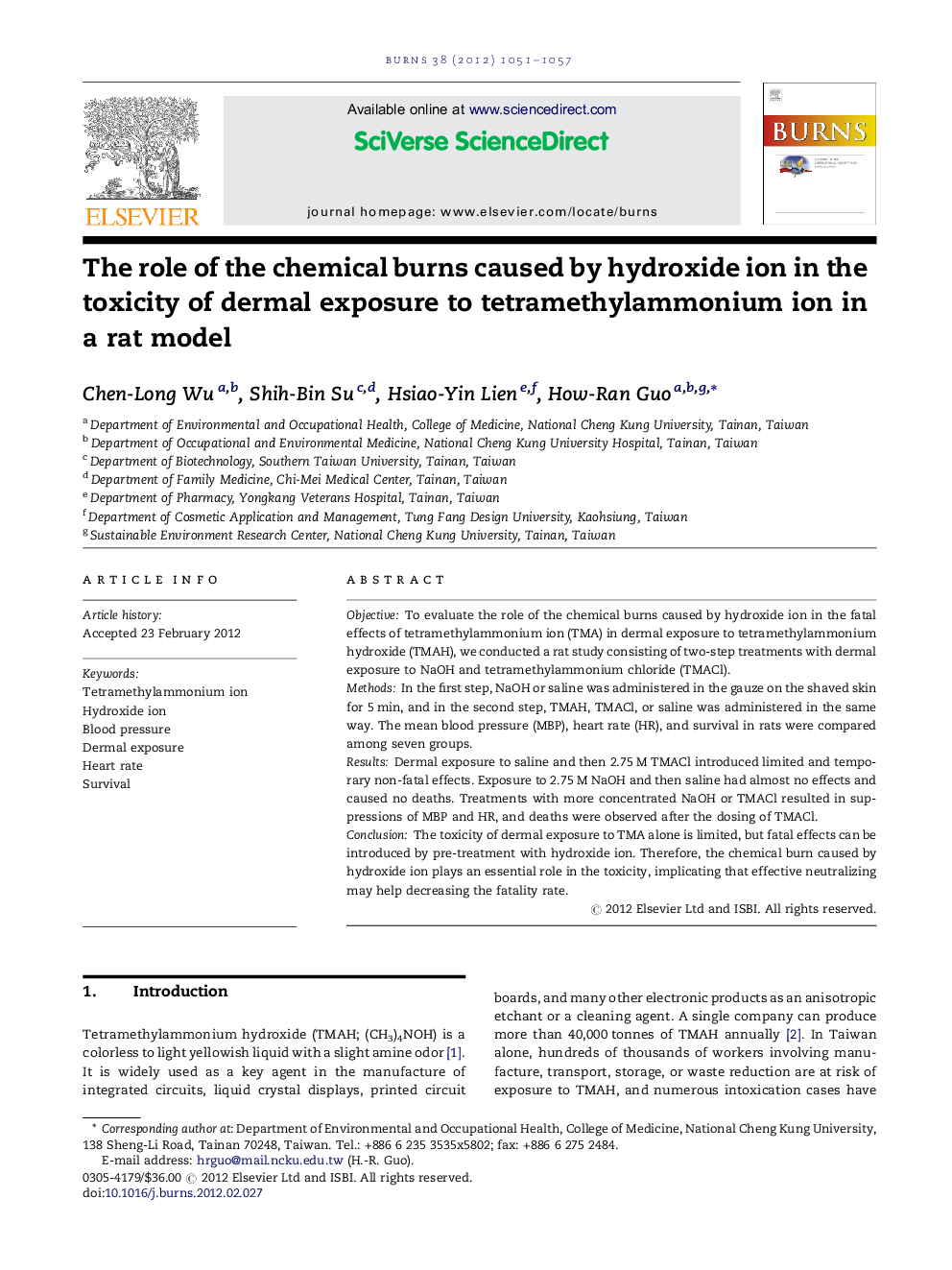| کد مقاله | کد نشریه | سال انتشار | مقاله انگلیسی | نسخه تمام متن |
|---|---|---|---|---|
| 3104769 | 1191663 | 2012 | 7 صفحه PDF | دانلود رایگان |

ObjectiveTo evaluate the role of the chemical burns caused by hydroxide ion in the fatal effects of tetramethylammonium ion (TMA) in dermal exposure to tetramethylammonium hydroxide (TMAH), we conducted a rat study consisting of two-step treatments with dermal exposure to NaOH and tetramethylammonium chloride (TMACl).MethodsIn the first step, NaOH or saline was administered in the gauze on the shaved skin for 5 min, and in the second step, TMAH, TMACl, or saline was administered in the same way. The mean blood pressure (MBP), heart rate (HR), and survival in rats were compared among seven groups.ResultsDermal exposure to saline and then 2.75 M TMACl introduced limited and temporary non-fatal effects. Exposure to 2.75 M NaOH and then saline had almost no effects and caused no deaths. Treatments with more concentrated NaOH or TMACl resulted in suppressions of MBP and HR, and deaths were observed after the dosing of TMACl.ConclusionThe toxicity of dermal exposure to TMA alone is limited, but fatal effects can be introduced by pre-treatment with hydroxide ion. Therefore, the chemical burn caused by hydroxide ion plays an essential role in the toxicity, implicating that effective neutralizing may help decreasing the fatality rate.
Journal: Burns - Volume 38, Issue 7, November 2012, Pages 1051–1057